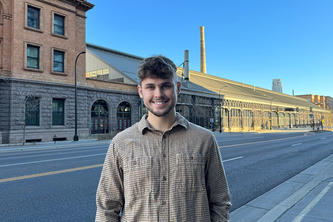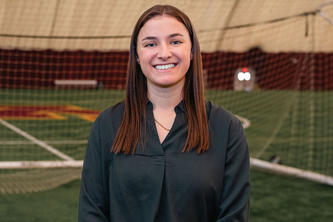Researchers land $20 million grant to explore impact of nanotechnology on the environment

University of Minnesota researchers are part of a team of researchers from the Center for Sustainable Nanotechnology (CSN) who have received a new $20 million grant from the National Science Foundation to evaluate the impact of nanotechnology on the environment and other living things.
University of Minnesota Professor Christy Haynes, a leading researcher in the growing field of nanotoxicology, is the center’s associate director. The multi-institutional research center is based at the University of Wisconsin-Madison.
Nanotechnology involves the use of materials at the smallest scale, including the manipulation of individual atoms and molecules. Products that use nano-scale materials range from beer bottles to car wax, solar cells, and electric and hybrid car batteries.
While there are already hundreds of products that use nanomaterials in various ways, much remains to be learned about how nanoparticles affect the environment and the multitude of organisms—from bacteria to plants, animals and people—that may be exposed to them.
“Some of the big questions we’re asking are: How is this going to impact bacteria and other organisms in the environment? What do these particles do?” said center director and UW-Madison Professor Robert Hamers. “The purpose of the center is to explore how we can make sure these nanotechnologies come to fruition with little or no environmental impact.”
In addition to UW-Madison and the University of Minnesota, scientists from UW-Milwaukee, the University of Illinois, Northwestern University, and the Pacific Northwest National Laboratory have been involved in the center’s first phase of research. Joining the center for the next five-year phase are Tuskegee University, the University of Maryland-Baltimore County, Johns Hopkins University, the University of Iowa, Augsburg College, and Georgia Tech.
University of Minnesota Professor Haynes said the center provides great training for students in groundbreaking new areas. In Haynes’ laboratory, for example, third-year University of Minnesota graduate student Joseph Buchman is among the researchers investigating how coatings on iron oxide nanoparticles influence the toxicity of the nanoparticles. These iron oxide nanoparticles are currently used in consumer products such as speakers and also have been approved for clinical use.
“If the coating on the nanoparticles is toxic, why is it toxic?” Buchman said. “How can we change the design rules for the coating agent or for the nanoparticle to make it less toxic and harmful to the environment?”
Haynes said the center’s overall goal is “benign by design”—striving to determine and then minimize or eliminate the nanoparticles’ biological and environmental impacts while maintaining their technological advantages.
To achieve that goal, the center has established working relationships with several companies to conduct research on materials in the very early stages of development. Students will have opportunities to explore their research ideas during internships with partner companies and with the center’s student-initiated seed grants.
For more information, read the Center for Sustainable Nanotechnology blog or visit the center’s website.
The Center for Sustainable Nanotechnology funding is through the NSF’s competitive Centers for Chemical Innovation Program, which funds centers focused on major, long-term fundamental chemical research challenges.
- Categories:
- Science and Technology





